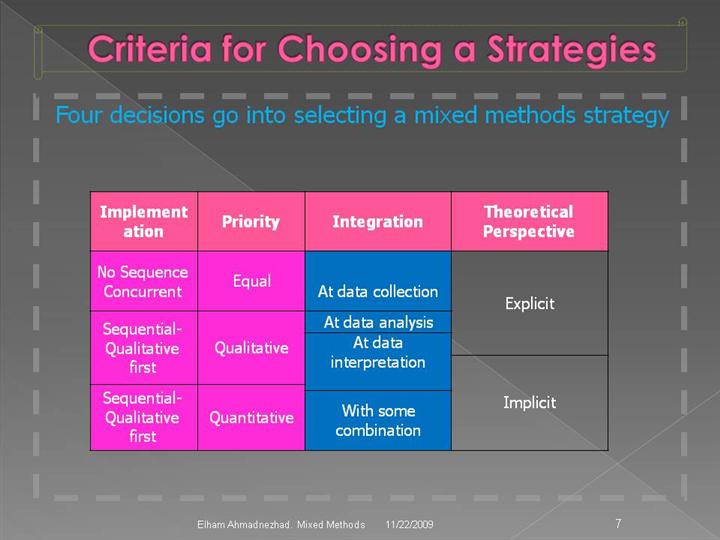| front |1 |2 |3 |4 |5 |6 |7 |8 |9 |10 |11 |12 |13 |14 |15 |16 |17 |18 |19 |20 |21 |22 |23 |review |
 |
-Implementation means either that the researchers collect both the quantitative and qualitative data in phases (sequentially) or that they gather it at the same time (concurrently). When the data are collected in phases, either the quantitative or quantitative data can come first.
-A
second factor that goes into the choice of a strategy is whether greater
priority or
weight is given to the quantitative data and analysis. The priority
might be equal, or it might be skewed toward either qualitative or
quantitative data. A priority for one type of data or the other depends
on the interests of the researcher, the audience for the study, and what
the investigator seeks to emphasize in the study. In practical terms,
priority occurs in a mixed methods study through such strategies as
whether quantitative or qualitative information is emphasized first in
the study, the extent of treatment of one type of data or the other, and
use of a theory as an inductive or deductive framework for the study.
-
Integration
of the two types of data might occur at several stages in the process of
research: the data collection, the data analysis, interpretation, or
some combination of places. Integration means that the researcher
“mixes” the data.
-
A final factor to consider is whether a larger,
theoretical perspective
guides the entire
design. This perspective may be one from the social sciences or from an
advocacy/ participatory lens (e.g., gender, race, class). Although all
designs have implicit theories, mixed methods researchers can make the
theory explicit as a guiding framework for the study. This framework
would operate regardless of the implementation, priority, and
integrative features of the strategy of inquiry.
|